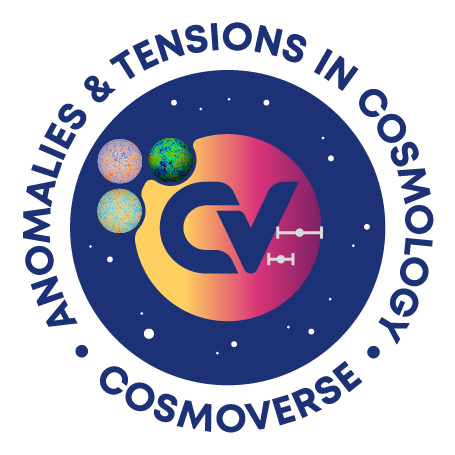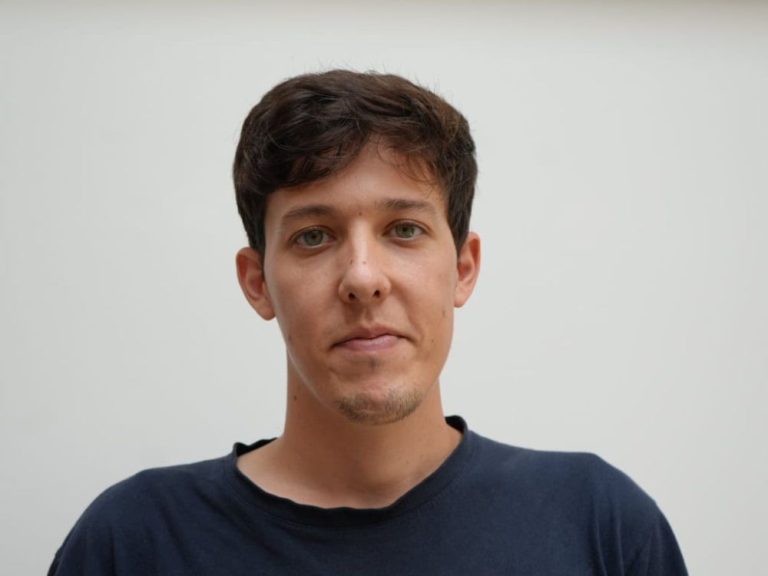What is your name, affiliation, academic position, and job title?
My name is Gerardo García Moreno and I am a third year PhD student at the Institute for Astrophysics of Andalucía, IAA-CSIC, at Granada, Spain.
What is your journey?
I was born in Córdoba, Spain and moved to Madrid to study my Bachelor studies in Physics, spent a summer at Barcelona, with a summer internship at ICFO (Institute of Photonic Sciences), and then came back to Madrid to study a Master’s in theoretical physics. After that, I decided to do a PhD under the supervision of Prof. Carlos Barceló at Granada, Spain.
What is your field of research and/or what project are you involved in?
My aim is to better understand the interplay between quantum effects and gravitation. Nowadays, on the one hand, we have the theory of quantum mechanics, that is able to describe the smallest structures that we have been able to unveil, namely atoms, nuclei, etc.; and on the other hand, the theory of General Relativity, which describes the largest structures that we know in the universe: black holes, galaxies or even the expansion of the universe itself. In regions in which the gravitational field is strong enough, we believe that quantum effects should become relevant and would alter the picture that we have about these gravitational phenomena.
The interest I have in understanding better how inhomogeneities gravitate is twofold. First, understanding better the space of solutions of General Relativity on its own is crucial if we want to understand phenomena beyond General Relativity. Second, a careful analysis of how inhomogeneities grow and develop might suggest some new phenomenology that could help in solving some of the cosmological tensions that we have nowadays, for example the so-called S-8 tension related to how homogeneous the universe looks.
What are your research plans?
I work in different projects in which we try to better understand the structure of black holes beyond General Relativity and I am also involved in a project in which we try to dig further in the question of how inhomogeneities gravitate in cosmology within the General Relativity paradigm.
What are the most exciting open questions in your research area?
I believe one of the most interesting questions in my research field is: How much hair can black holes have? In General Relativity, black holes are supposed to be described only by two parameters that are its mass and angular momentum (how much it rotates). It is often said that “they do not have hair”, in the sense that they do not have any memory of the object that collapsed to form them. Once we go explore physics beyond General Relativity this is no longer guaranteed. We know that General Relativity is a very good approximation to the black holes that we detect and hence the amount of hair that they can have is limited. Then the question is whether we are able to quantify how much they can deviate from the General Relativity picture and whether we can detect it.
What advances or new results are you excited about or looking forward to?
I am looking forward to the LISA (Laser Interferometer Space Antenna) mission, which consists of a set of three spacecraft arranged in an equilateral triangle that orbit around the sun. It will use laser interferometry to detect the passage of gravitational waves. It opens a new channel of information toward our universe and it will allow us to (metaphorically) “hear” the universe in a different frequency domain to what we were able to before.
What is your view on cosmic tensions? How does your work connect with this open question in the community?
In my view the actual cosmic tensions, if they do not disappear when the data analysis is refined within the following years, represent undoubtedly the fact that there is still much that we need to understand about the universe and about gravitation itself! For me, one of the most interesting questions nowadays is understanding better whether we have missed something on the standard treatment of large scale structure in General Relativity that needs to be reconsidered.
What role do you think a community network like CosmoVerse can play in developing theoretical astroparticle physics and cosmology?
The role played by CosmoVerse is providing an environment in which it is possible to gather together the experimentalists and observationalists, data analysts, and theoretical physicists. The interaction between all of them is crucial, since we live in a moment in which the experiments are so convoluted, the amount of data is so huge and theories are so complicated, that it is hard for a single person to be aware of all the details involved in all the steps of testing a cosmological model. The network ensures that interactions between these three different groups of scientists happen in an efficient way so that we can row in the same direction.
How do you relax after a hard day of work?
I love music: I love listening to it and I also play the guitar and the bass. I also enjoy doing sports, especially outdoor activities like running and trekking routes.
What question would you have liked us to ask you, and what would you have answered?
I am very into science fiction, I would have loved that you asked me what kind of scientific wish I would make. I would have answered that spatial trips between galaxies. Hopefully one day we will find out how to stabilize a warp drive like those of Star Trek…

